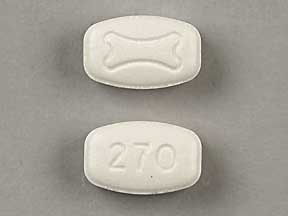Fosamax Plus D Interactions
There are 185 drugs known to interact with Fosamax Plus D (alendronate/cholecalciferol), along with 12 disease interactions, and 3 alcohol/food interactions. Of the total drug interactions, 13 are major, 167 are moderate, and 5 are minor.
- View all 185 medications that may interact with Fosamax Plus D
- View Fosamax Plus D alcohol/food interactions (3)
- View Fosamax Plus D disease interactions (12)
Most frequently checked interactions
View interaction reports for Fosamax Plus D (alendronate / cholecalciferol) and the medicines listed below.
- Advair Diskus (fluticasone / salmeterol)
- albuterol
- aspirin
- atenolol
- Calcium 600 D (calcium / vitamin d)
- calcium / vitamin d
- Celebrex (celecoxib)
- Crestor (rosuvastatin)
- Cymbalta (duloxetine)
- Fish Oil (omega-3 polyunsaturated fatty acids)
- folic acid
- furosemide
- gabapentin
- hydrochlorothiazide
- levothyroxine
- Lexapro (escitalopram)
- Lipitor (atorvastatin)
- lisinopril
- Lyrica (pregabalin)
- metformin
- metoprolol
- Nexium (esomeprazole)
- omeprazole
- prednisone
- Prevacid (lansoprazole)
- simvastatin
- Synthroid (levothyroxine)
- tramadol
- Vitamin C (ascorbic acid)
- Vitamin D3 (cholecalciferol)
Fosamax Plus D alcohol/food interactions
There are 3 alcohol/food interactions with Fosamax Plus D (alendronate / cholecalciferol).
Fosamax Plus D disease interactions
There are 12 disease interactions with Fosamax Plus D (alendronate / cholecalciferol) which include:
- aspiration
- ONJ
- hypocalcemia
- upper GI mucosal irritation
- arrhythmia
- electrolyte imbalance
- hypercalcemia
- renal dysfunction
- CV
- renal dysfunction
- asthma
- hepatobiliary dysfunction
More about Fosamax Plus D (alendronate / cholecalciferol)
- Fosamax Plus D consumer information
- Compare alternatives
- Pricing & coupons
- Reviews (1)
- Drug images
- Side effects
- Dosage information
- During pregnancy
- FDA approval history
- Drug class: bisphosphonates
- En español
Related treatment guides
Drug Interaction Classification
| Highly clinically significant. Avoid combinations; the risk of the interaction outweighs the benefit. | |
| Moderately clinically significant. Usually avoid combinations; use it only under special circumstances. | |
| Minimally clinically significant. Minimize risk; assess risk and consider an alternative drug, take steps to circumvent the interaction risk and/or institute a monitoring plan. | |
| No interaction information available. |
See also:
Further information
Always consult your healthcare provider to ensure the information displayed on this page applies to your personal circumstances.


